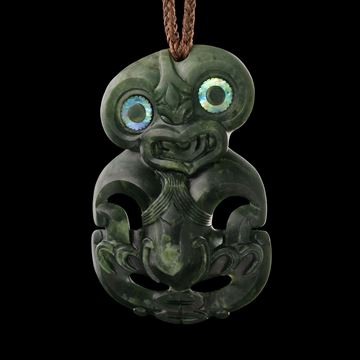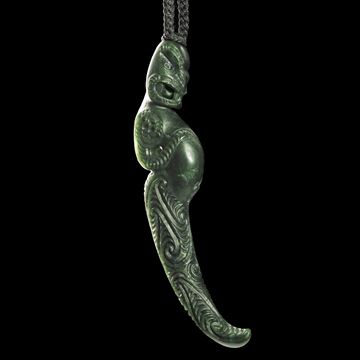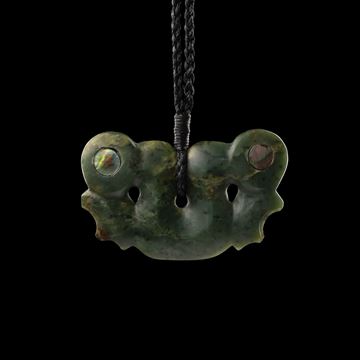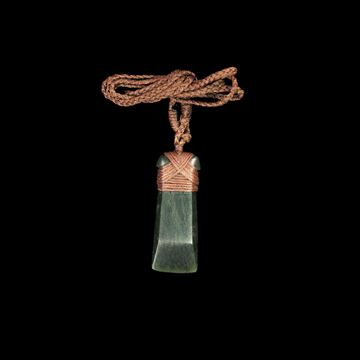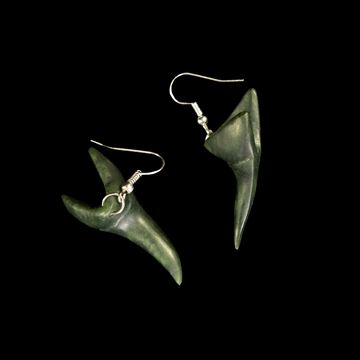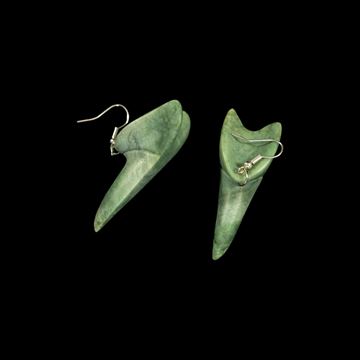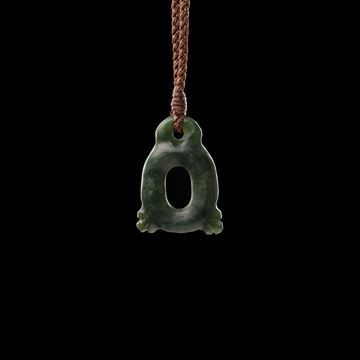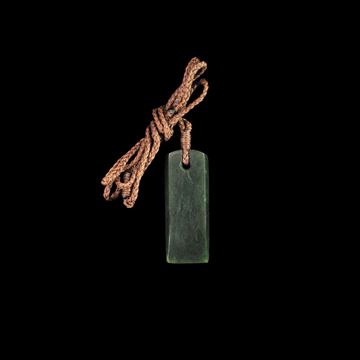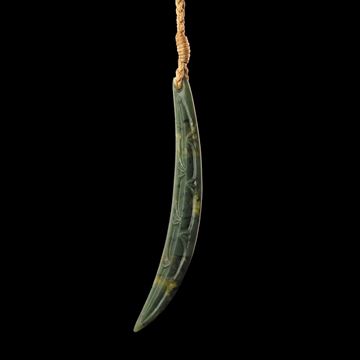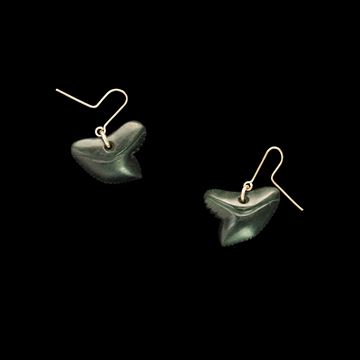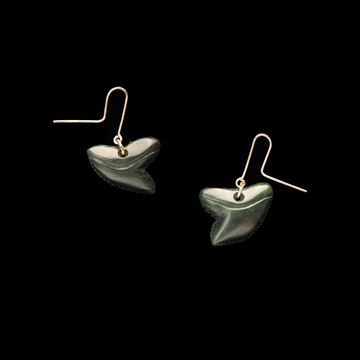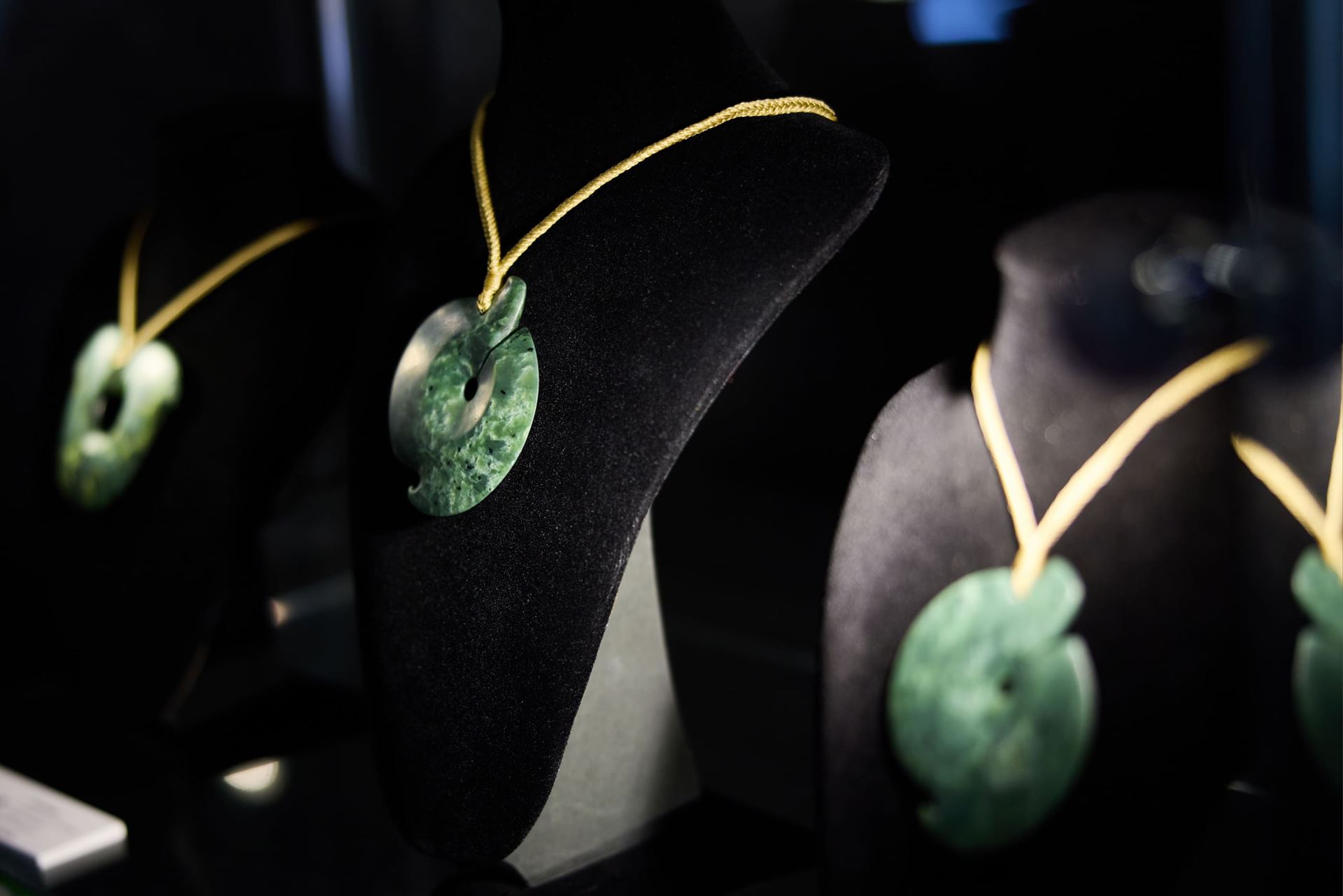
Pounamu - Jade
At Te Takapū, students learn the revered tradition of carving pounamu (Nephrite-Jade/Greenstone), bone and stone. This tohu (qualification) is for two years and is approximately 40 hours per week, 47 weeks of the year.
Like something special? Commission your own special piece here
Hei Tiki - 6173KH
Hei tiki are the best known of all Māori adornments. Tiki are symbols of fertility that depict a new-born child. They are often family heirlooms bearing personal names and embodying their wearers lineage. As with most Māori personal adornments, hei tiki are often passed down generationally.
Material: Pounamu (Kawakawa)
Measurements: 110mm x 71mm x 23mm
$3,200.00
Hei Tiki - 6717PD
Hei tiki are the best known of all Māori adornments. Tiki are symbols of fertility that depict a new-born child. They are often family heirlooms bearing personal names and embodying their wearers lineage. As with most Māori personal adornments, hei tiki are often passed down generationally.
Material: Pounamu (Kawakawa)
Measurements: 88mm x 58mm
$2,600.00
Aurei - 5473MA
Aurei were customarily used as a pin for fastening cloaks and may be made from bone, stone, wood or shell. They may also have been worn through the ear as an earring or around the neck as a pendant. Aurei are still commonly worn as pendants and earrings and as with most Māori personal adornments, are often passed down generationally.
Material: Pounamu (Kawakawa)
Measurements: 135mm x 28mm x 17mm
$1,800.00
Pekapeka - 5694RH
The Pekapeka (native NZ bat) represents the interwoven nature of the spirit world and the world of the living – the seen and the unseen. The bat was interpreted by Māori as a creature who symbolically acted as an interface between the two worlds and whose physiology (which does not possess the gift of sight) appeared to be guided by the ethereal and the metaphysical.
Material: Pounamu (Kawakawa)
Measurements: 60mm x 35mm x 8mm
$1,100.00
Toki - 6180KH
The toki pendent is based on the form of the carving chisel used in whakairo (Māori carving).
Material: Pounamu (Kawakawa)
Measurements: 50mm x 19mm x 7mm
$490.00
Mako Earrings - 5621KC
Shark teeth were highly sought after to wear as a symbol of prestige for personal adornment. They were reflective of the mana of the shark itself. These earrings are in reference to the Mako shark. Material: Pounamu (Kawakawa)
Measurements: 45mm x 21mm
$490.00
Mako Earrings - 5624KC
Shark teeth were highly sought after to wear as a symbol of prestige for personal adornment. They were reflective of the mana of the shark itself. These earrings are in reference to the Mako shark. Material: Pounamu (Tokaatea Pounamu)
Measurements: 54mm x 22mm
$490.00
Pōria Kākā - 5497MA
Pōria Kākā are leg rings crafted from bone or stone used to keep pet kākā (parrots) from flying away. The giant kaka parrot was used by the Māori to assist them during hunting. The bird was used as a decoy to capture other kaka parrots.
As with many Māori items the kaka ring was both used as a tool as well as an adornment.
Material: Pounamu (Kawakawa)
Measurements: 35mm x 25mm x 4mm
$450.00
Toki - 6179KH
The toki pendent is based on the form of the carving chisel used in whakairo (Māori carving).
Material: Pounamu (Kawakawa)
Measurements: 50mm x 19mm x 6mm
$450.00
Aurei - 5638KC
Aurei were customarily used as a pin for fastening cloaks and may be made from bone, stone, wood or shell. They may also have been worn through the ear as an earring or around the neck as a pendant. Aurei are still commonly worn as pendants and earrings and as with most Māori personal adornments, are often passed down generationally.
Material: Pounamu (Kawakawa)
Measurements: 83mm x 10mm
$420.00
Tiger Shark Earrings - 4543IA
Shark teeth were highly sought after to wear as a symbol of prestige for personal adornment. They were reflective of the mana of the shark itself.
Material: Pounamu (Kawakawa)
Measurements: 12mm x 25mm x 6mm
$390.00
Tiger Shark Earrings - 4544IA
Shark teeth were highly sought after to wear as a symbol of prestige for personal adornment. They were reflective of the mana of the shark itself.
Material: Pounamu (Kawakawa)
Measurements: 12mm x 25mm x 6mm
$390.00
- 1
- 2

